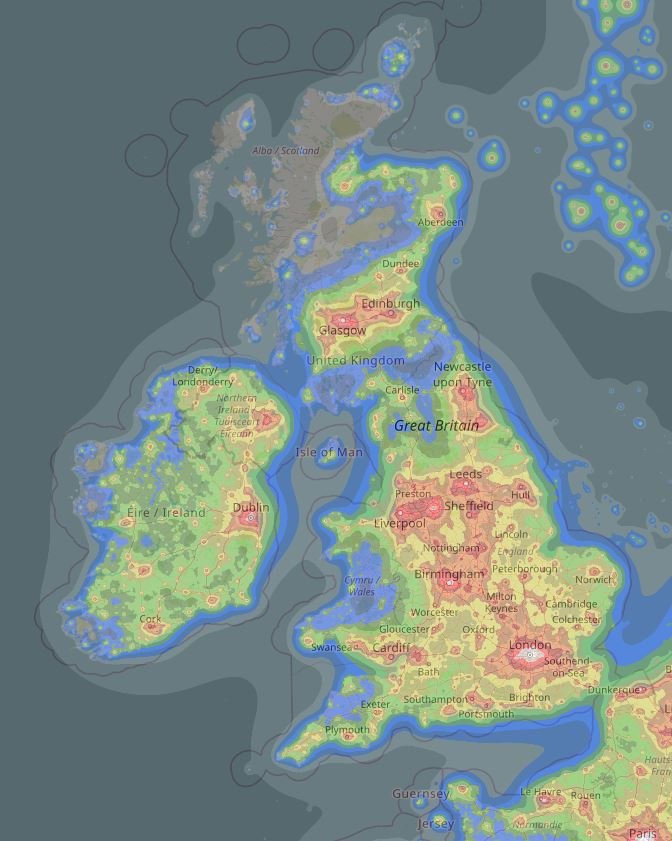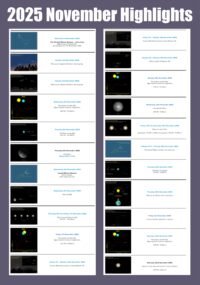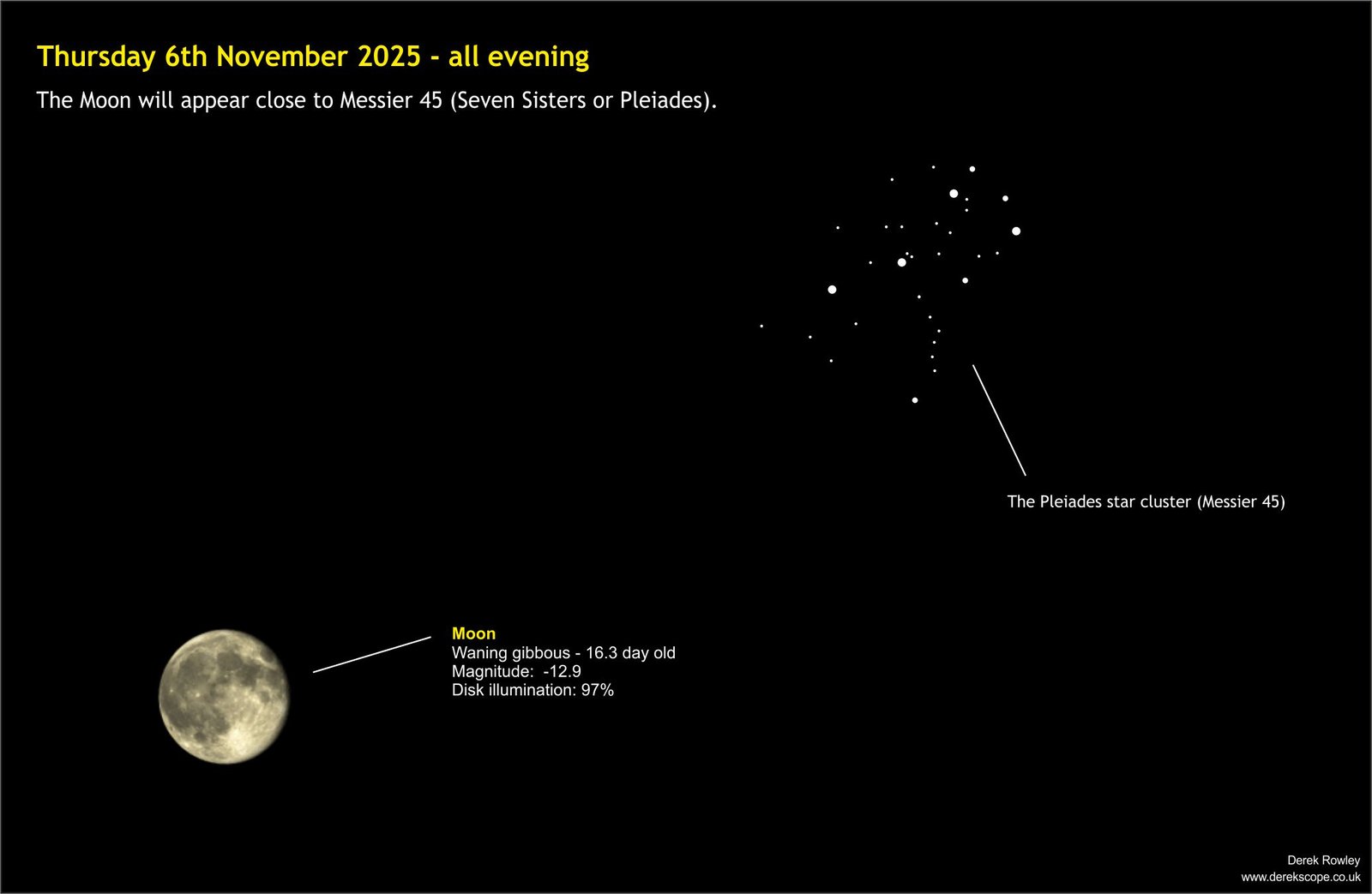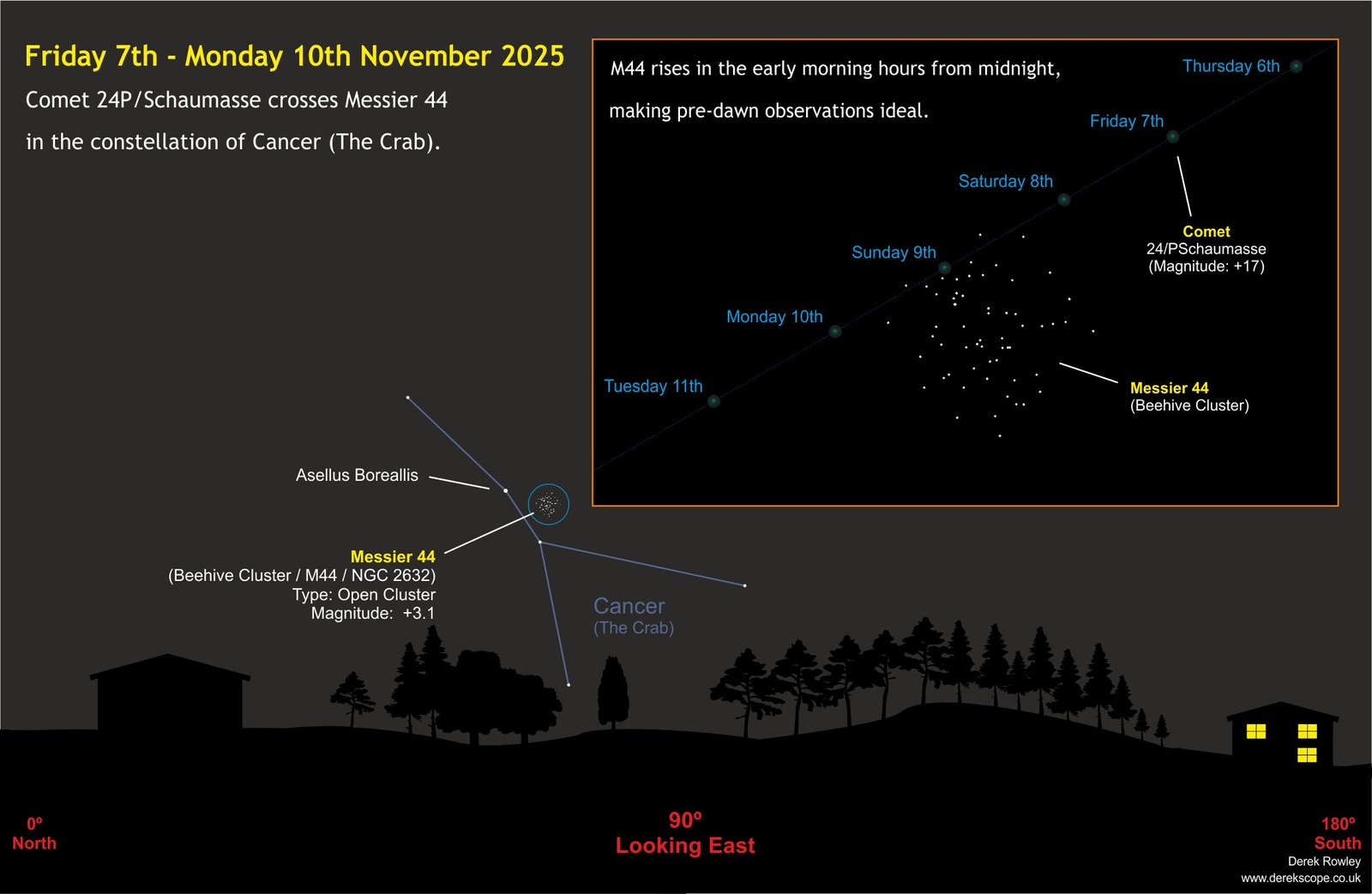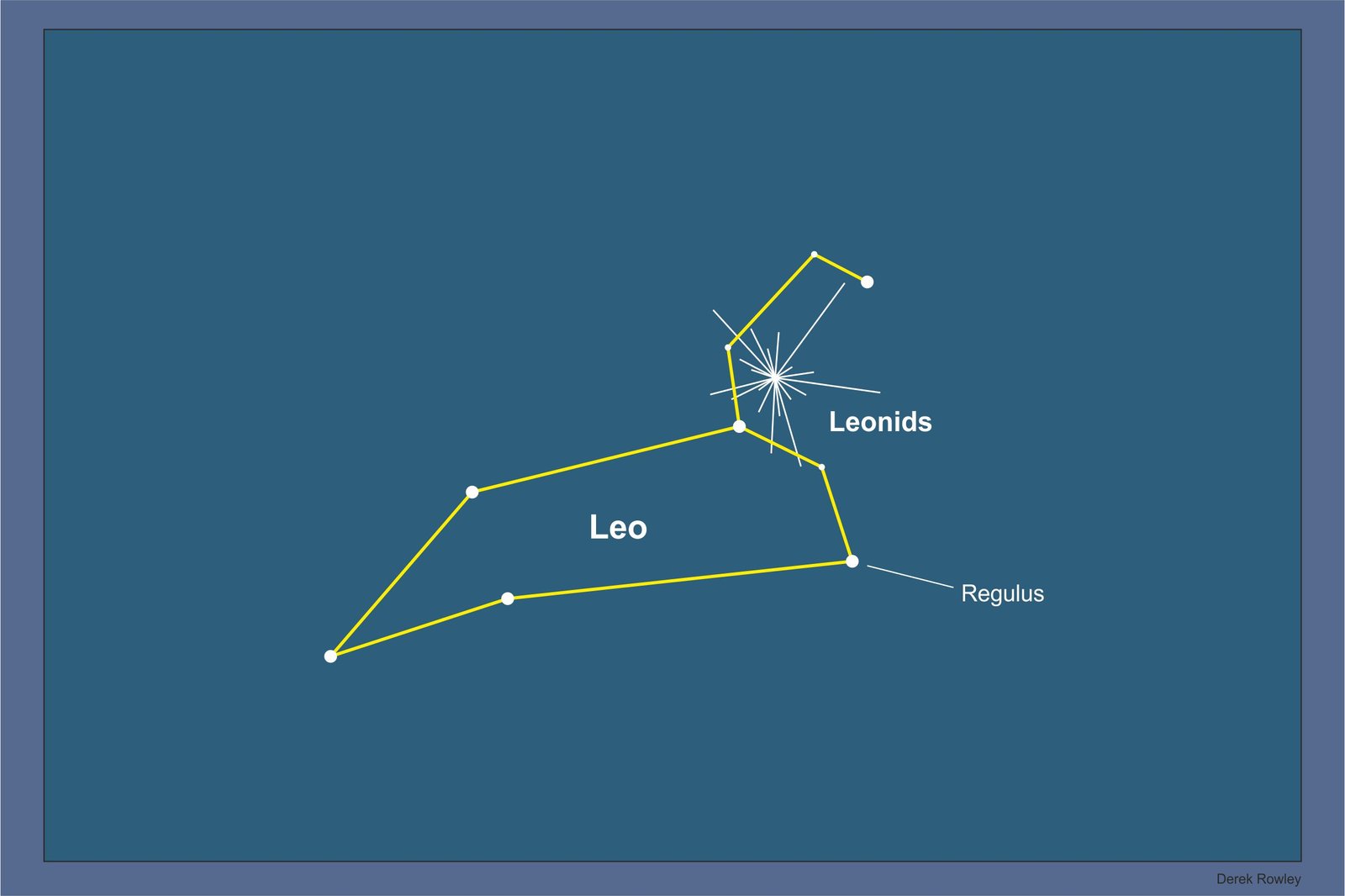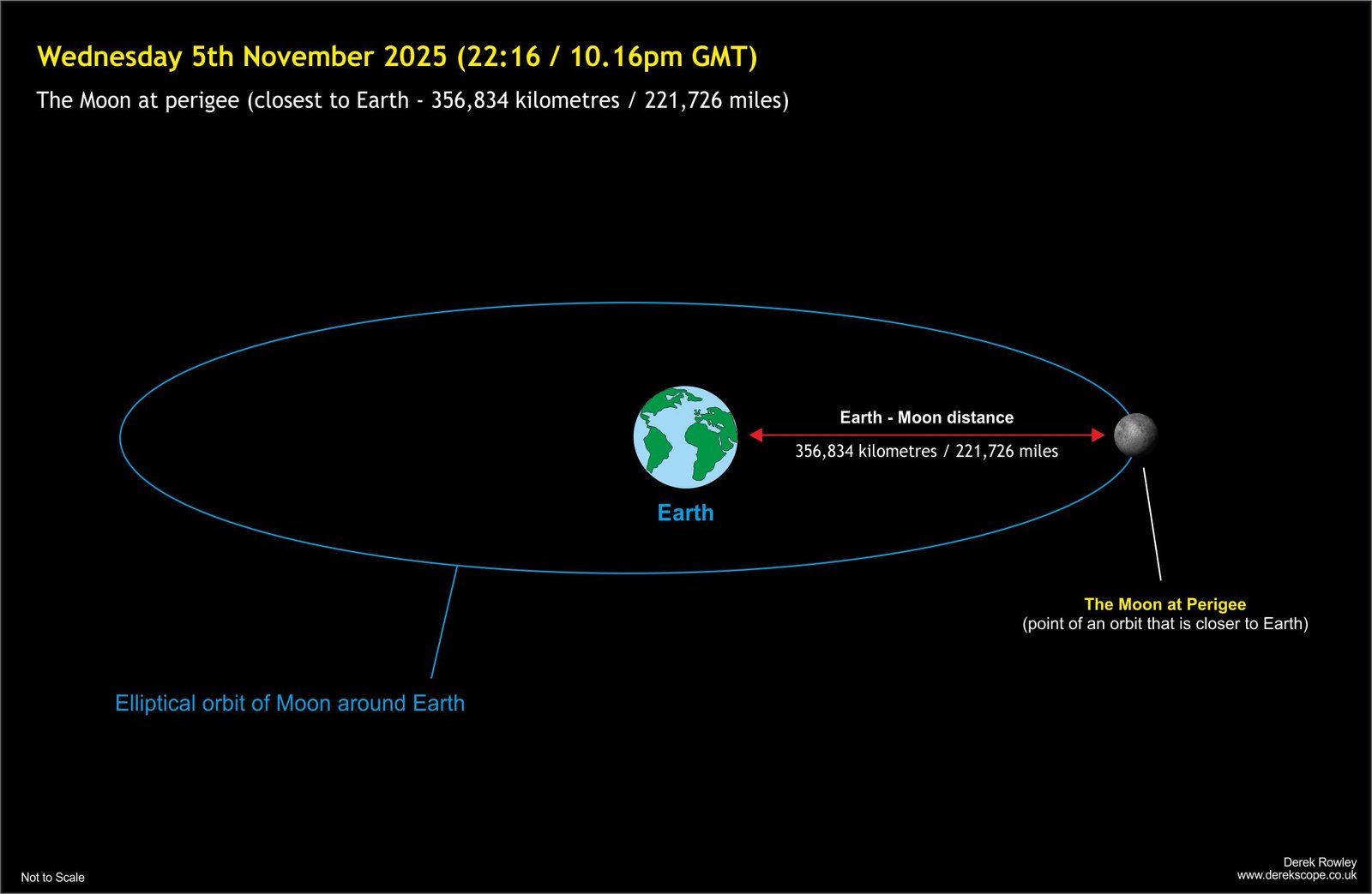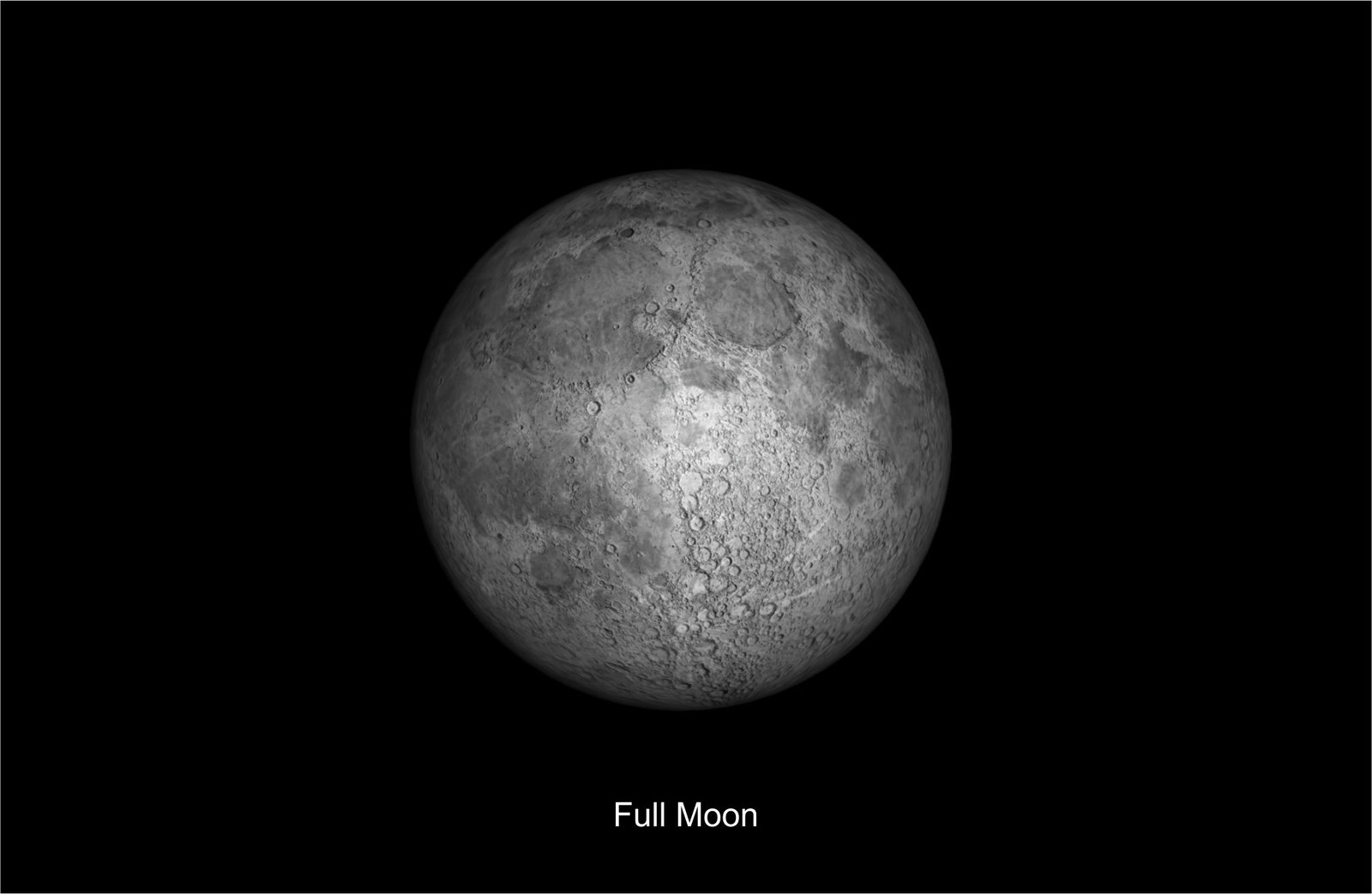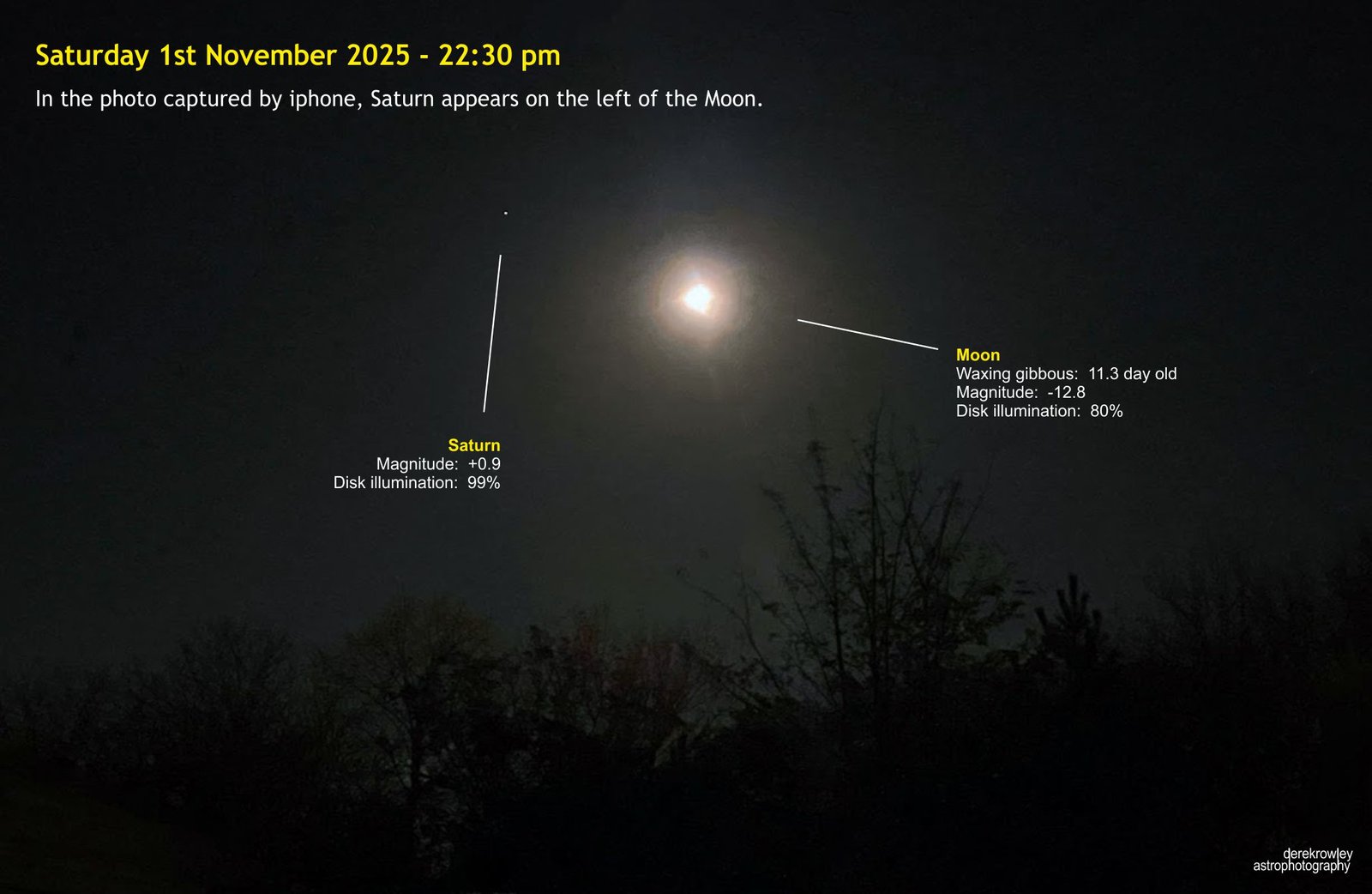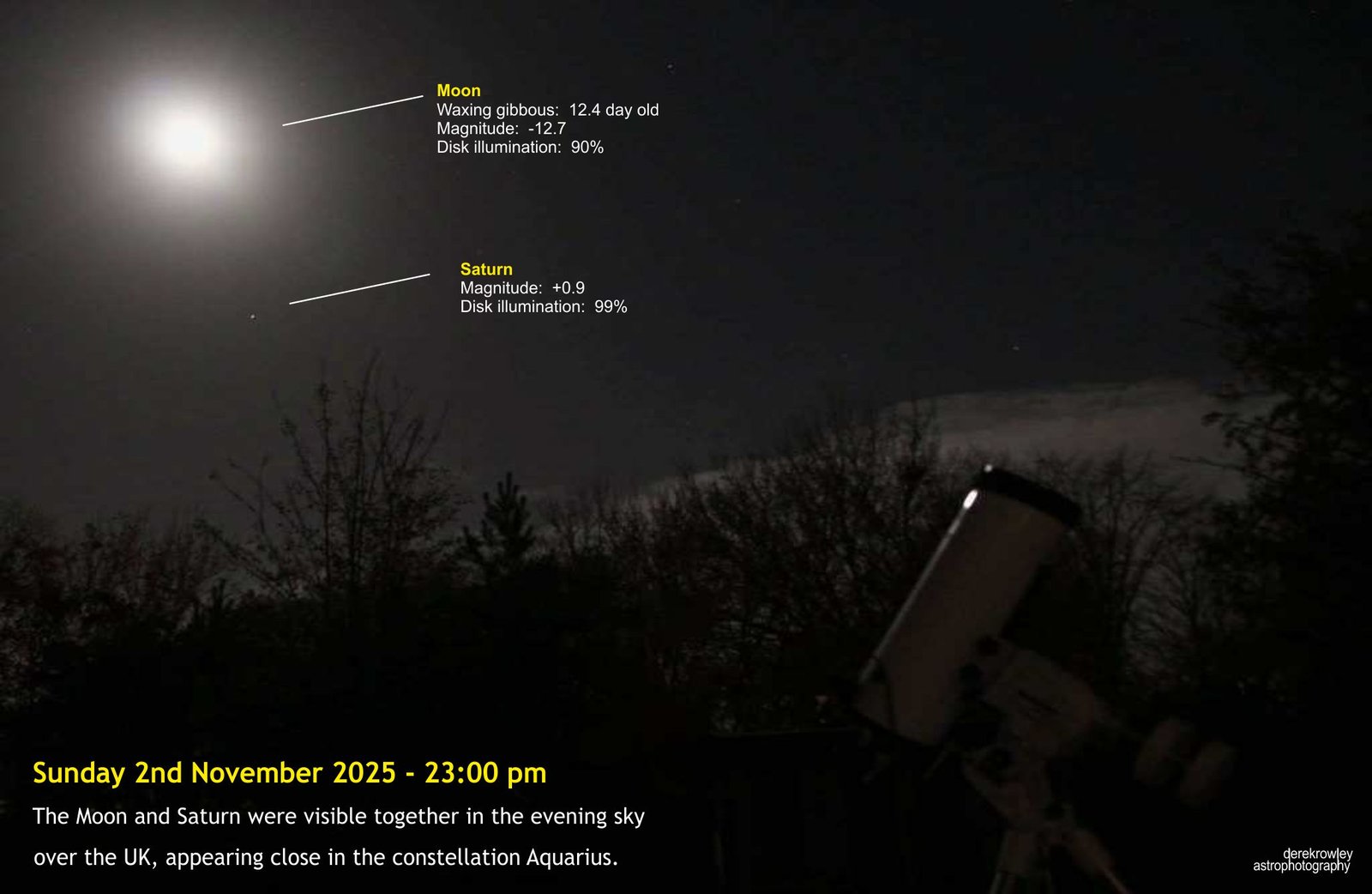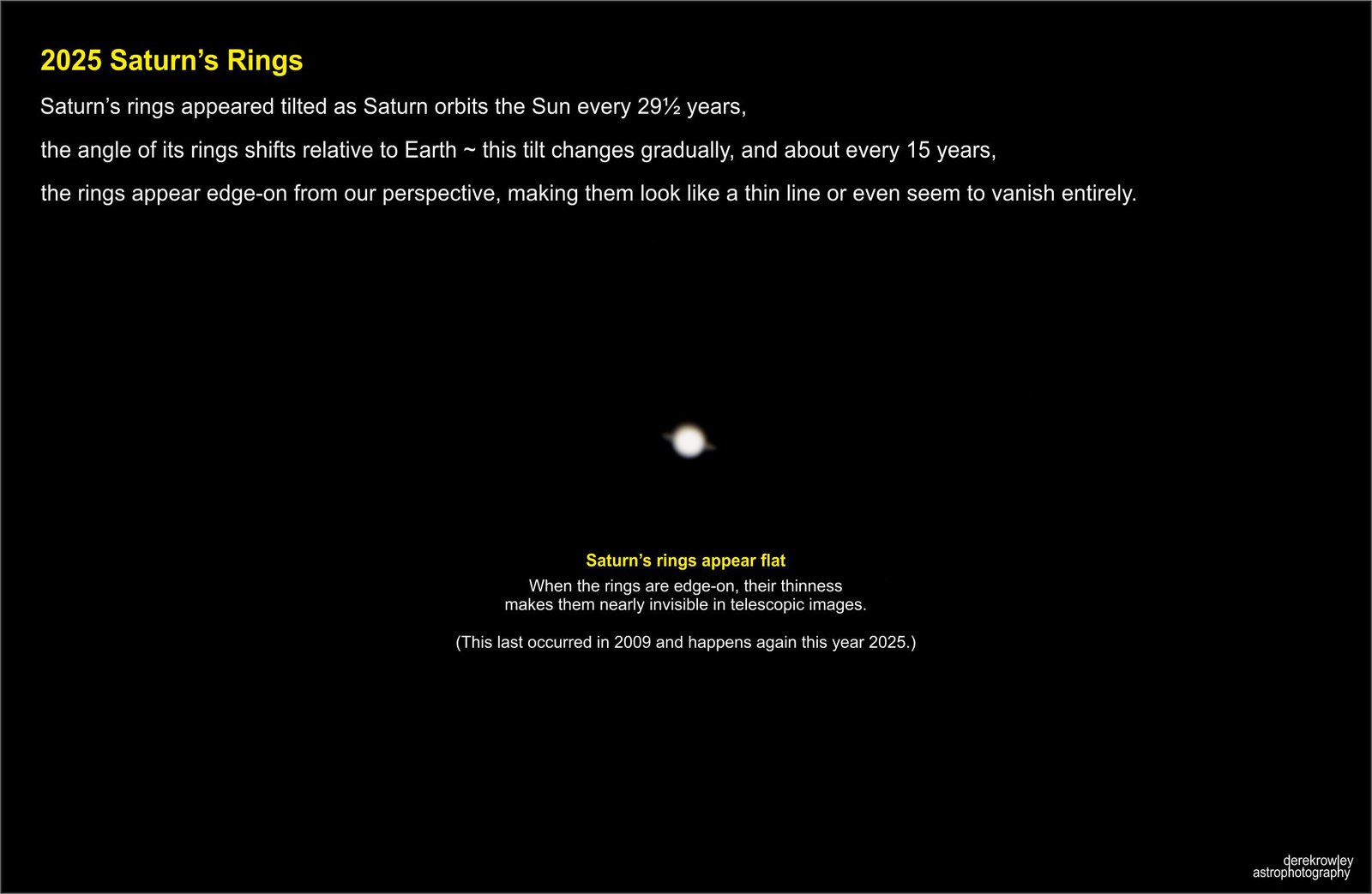Algol
The bright variable Star Beta Persei (Algol)
reaches minimum brightness.
(21:24 / 9.24pm)
o
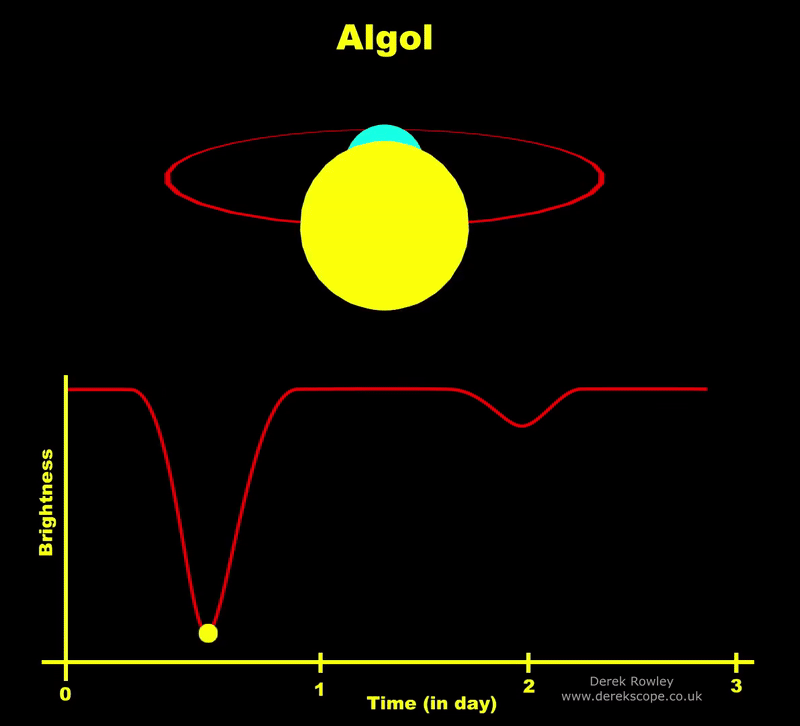
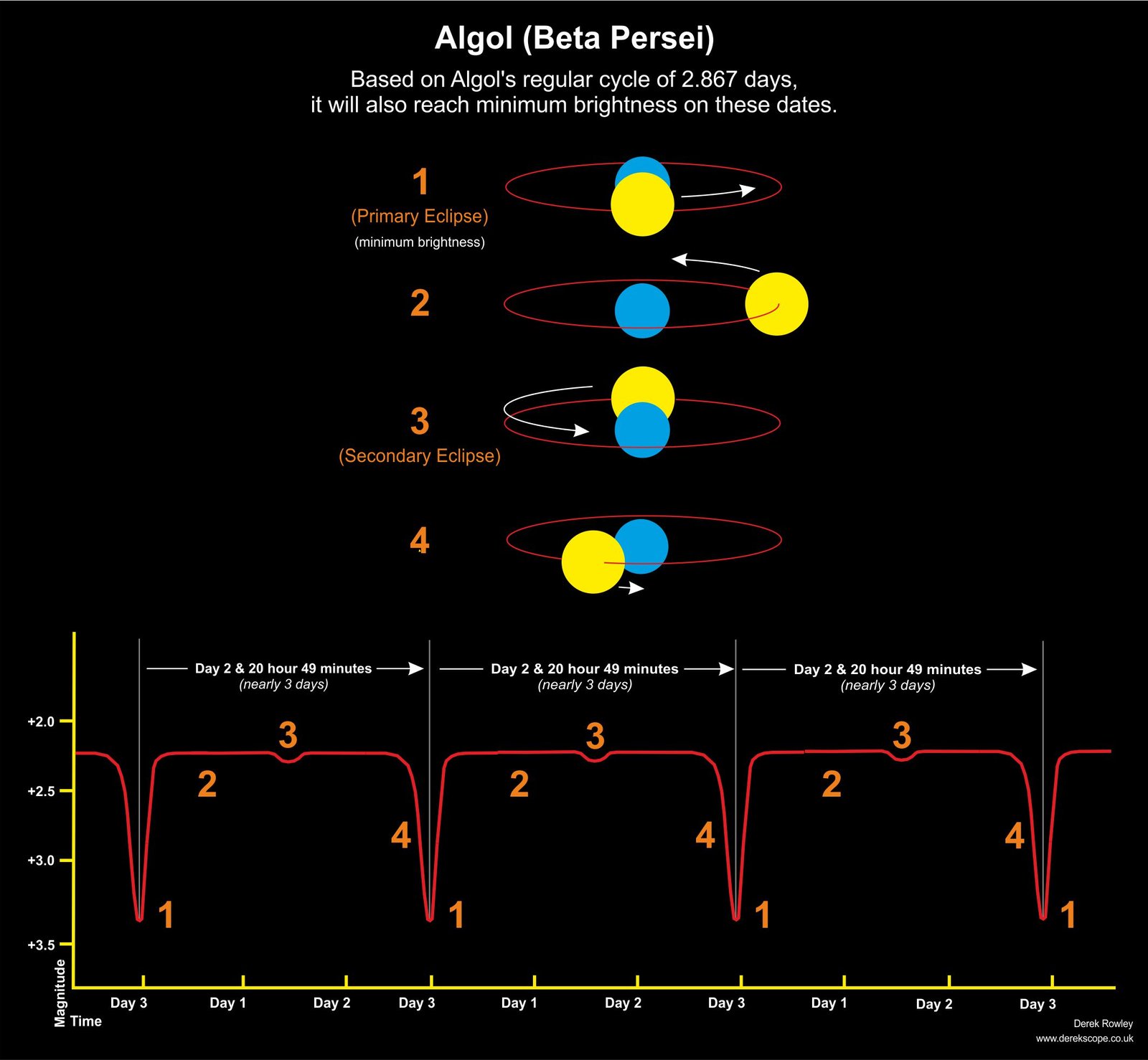
- The bright variable Star Beta Persei (Algol) reaches minimum brightness at 21:24 pm p21:24 m in the early evening on Monday 10th November and will be visible from the UK.
o - Here’s a list of upcoming minimum brightness times for Algol – read more.
oooo
oooo






